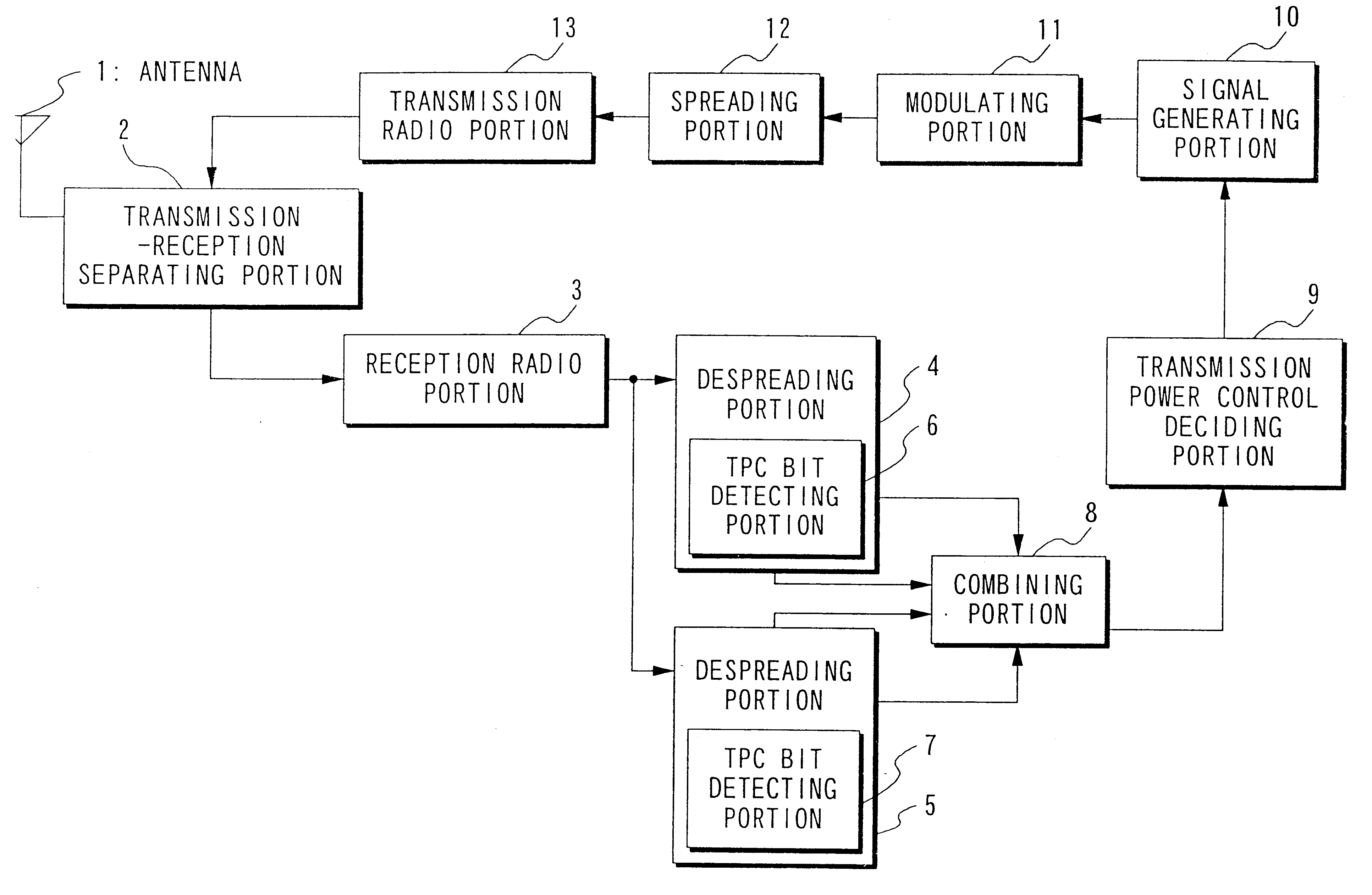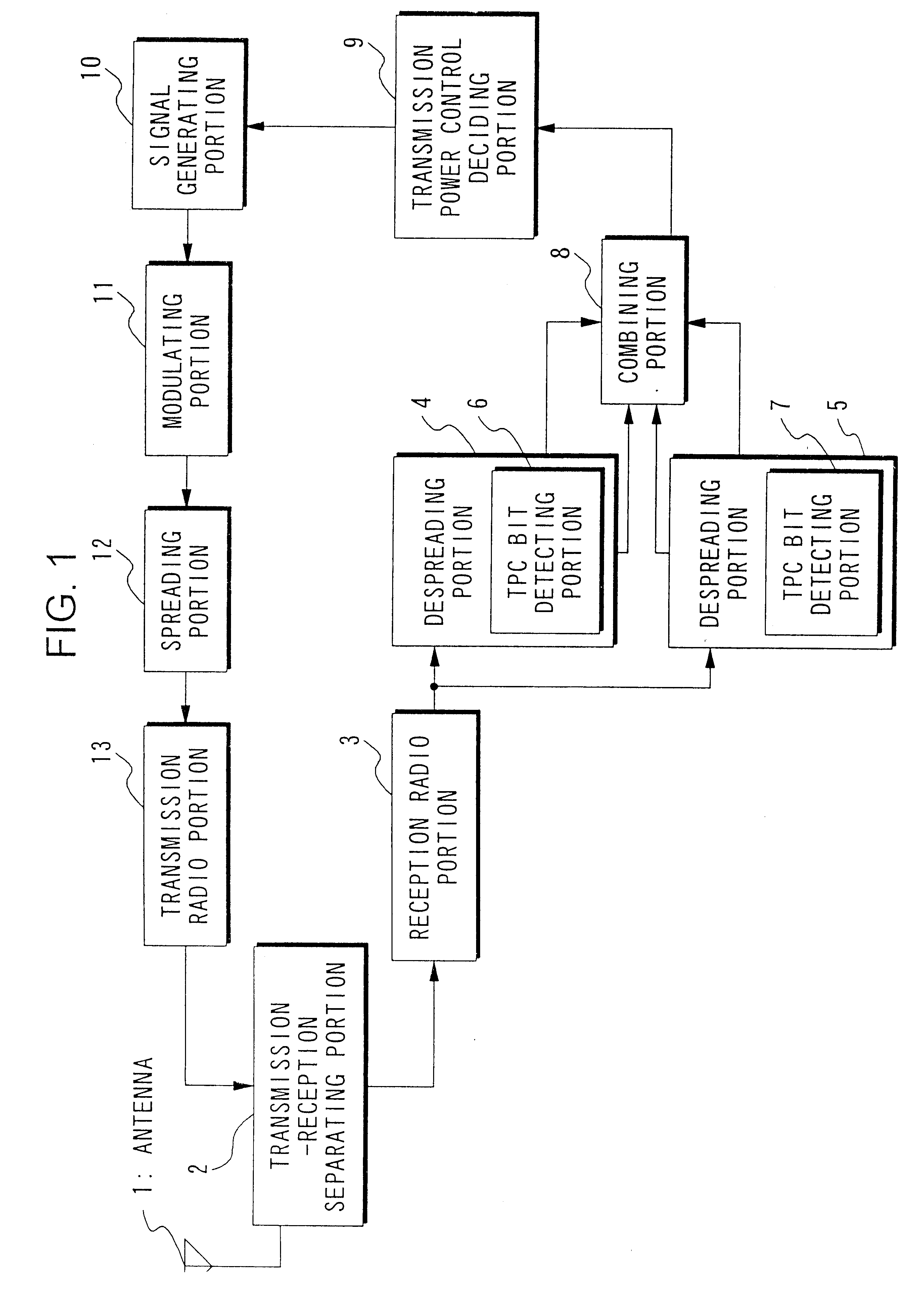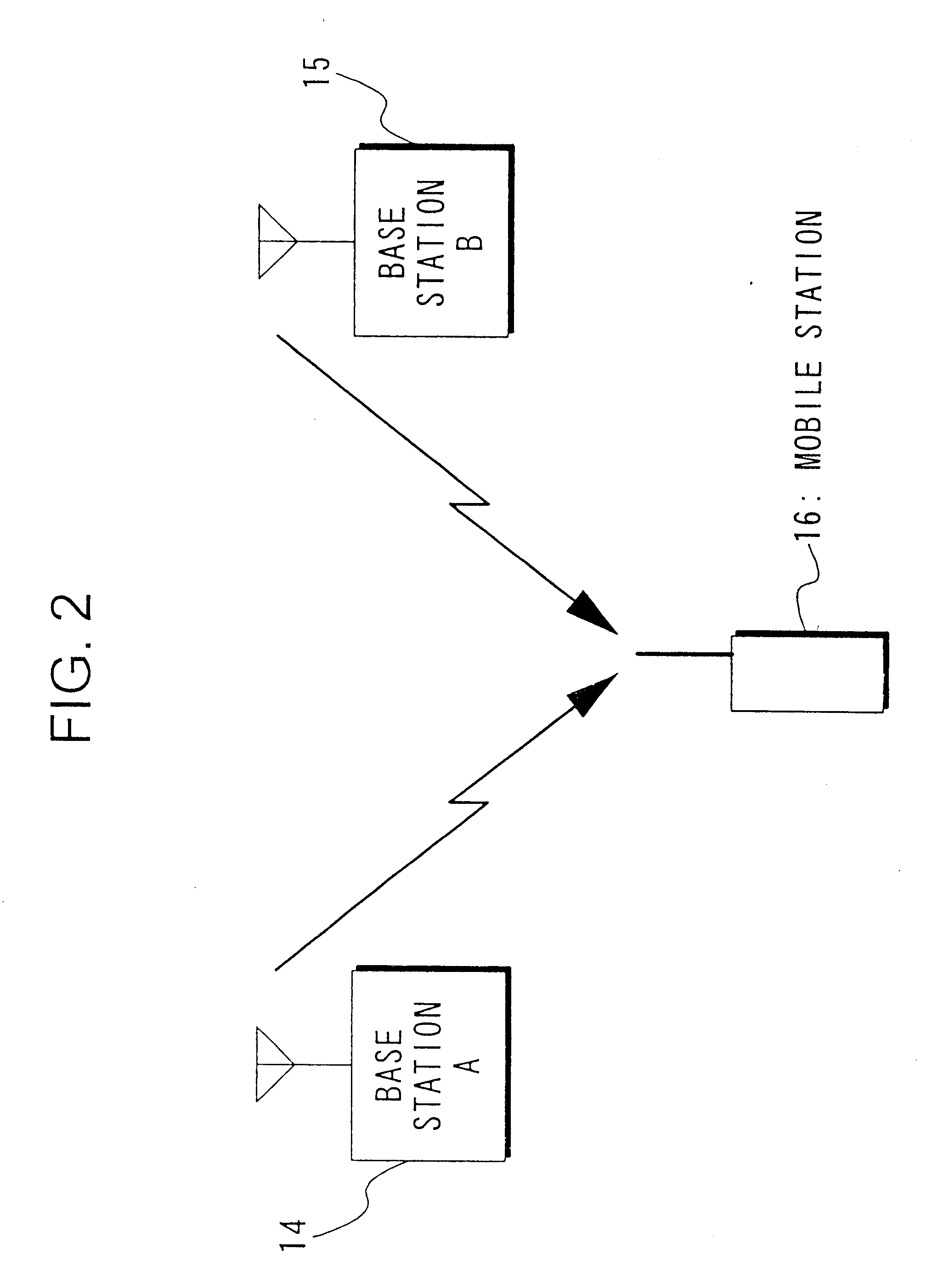Transmission power control method, mobile station, base station, and recording medium
a power control and mobile station technology, applied in power management, radio transmission, electrical equipment, etc., can solve the problems of increasing the error rate of transferring the tpc bit from a base station, the reception quality of the signal from a certain base station being degraded, and the mobile station not being able to receive the signals from all connected base stations with the same quality
- Summary
- Abstract
- Description
- Claims
- Application Information
AI Technical Summary
Benefits of technology
Problems solved by technology
Method used
Image
Examples
first embodiment
A-6: Supplement to the First Embodiment
With regard to the TPC bit combining method in the above-described first embodiment and modification examples, any publicly known method may be employed. For example, it is possible to employ a maximum ratio combining method, wherein the reception signal for each branch is weighted by a factor which is proportional to the amplitude level and inverse proportional to the noise power prior to adding; it is also possible to employ an equal-gain combining method, wherein the reception signals of all branches are weighted by the same factor prior to adding. (For details on these combining methods, see "Advanced Digital Communications", Kamilo Feher et al., Prentice-Hall Inc., 1986, and "Modern Communication Principles", Seymour Stein and J. Jay Jones, McGraw Hill Book Company). In essence, any combining method may be employed as long as it has sufficiently high precision in comparison to methods of combining after detection of the TPC bits.
second embodiment
B: Second Embodiment
B-1: Structure
FIG. 8 is a block diagram showing the structure of essential portions of a mobile station according to a second embodiment of the present invention. In the drawing, those parts which are the same as the parts in FIG. 1 are given the same reference numbers, and their explanation shall be omitted. The structure shown in FIG. 8 differs from the structure shown in FIG. 1 in that instead of a combining portion 8, a comparator 35 and a selective combining portion 36 are provided. The comparator 35 is for receiving as inputs reliability information outputted from the TPC bit detecting portions 6, 7 and comparing them. The selective combining portion 36 is for receiving as inputs the TPC bits outputted from the TPC bit detecting portions 6, 7 and selecting one for outputting to the transmission power control deciding portion 9.
The comparator 35 generates a selection signal indicating the TPC bit detecting portion 6 (i.e. the base station A14) if the value i...
PUM
 Login to View More
Login to View More Abstract
Description
Claims
Application Information
 Login to View More
Login to View More - R&D
- Intellectual Property
- Life Sciences
- Materials
- Tech Scout
- Unparalleled Data Quality
- Higher Quality Content
- 60% Fewer Hallucinations
Browse by: Latest US Patents, China's latest patents, Technical Efficacy Thesaurus, Application Domain, Technology Topic, Popular Technical Reports.
© 2025 PatSnap. All rights reserved.Legal|Privacy policy|Modern Slavery Act Transparency Statement|Sitemap|About US| Contact US: help@patsnap.com



